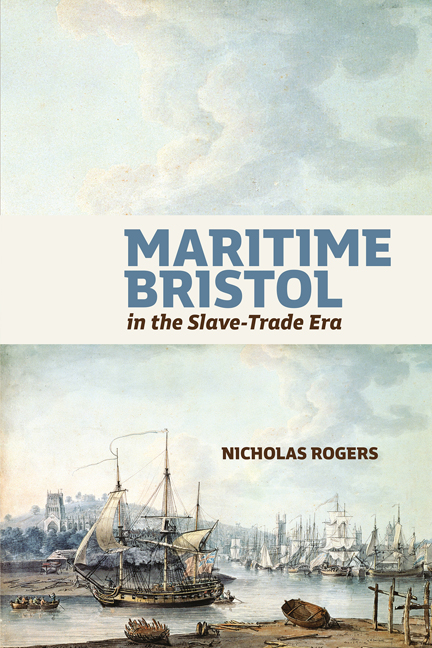Book contents
- Frontmatter
- Dedication
- Contents
- List of Figures
- Acknowledgments
- List of Abbreviations
- Introduction: High Tides, Atlantic Waters
- 1 The Pilots of Pill
- 2 The Hazards of the Bristol Slave Trade
- 3 Slave-ship Sociology
- 4 The Unfortunate Shipwright, or, the Trials of Robert Barker
- 5 Mutiny and Murder on Bristol’s Long-haul Ships, 1720–70
- 6 Bristol Privateering in the Mid-eighteenth Century
- 7 The Impressment of James Caton, 1779
- 8 New York in Bristol: the Crugers
- 9 The Politics of Abolition in Late Eighteenth-century Bristol
- Bibliography
- Index
5 - Mutiny and Murder on Bristol’s Long-haul Ships, 1720–70
Published online by Cambridge University Press: 08 May 2024
- Frontmatter
- Dedication
- Contents
- List of Figures
- Acknowledgments
- List of Abbreviations
- Introduction: High Tides, Atlantic Waters
- 1 The Pilots of Pill
- 2 The Hazards of the Bristol Slave Trade
- 3 Slave-ship Sociology
- 4 The Unfortunate Shipwright, or, the Trials of Robert Barker
- 5 Mutiny and Murder on Bristol’s Long-haul Ships, 1720–70
- 6 Bristol Privateering in the Mid-eighteenth Century
- 7 The Impressment of James Caton, 1779
- 8 New York in Bristol: the Crugers
- 9 The Politics of Abolition in Late Eighteenth-century Bristol
- Bibliography
- Index
Summary
Mutiny was an ever-present threat on Bristol's slave ships. It was even written into the articles of agreement between owners and seamen. On the Sally, drawn up in July 1785, the crew promised to ‘faithfully and truly perform and do their several Stations and Services … without any Manner of Denial, Mutiny, or Resistance whatever.’ A template contract of 1787 said the same thing. What mutiny meant in this context was not entirely clear. It was a slippery term, applied most obviously to seamen who collectively took possession of a ship, merging in this context with piracy. We are all familiar with the mutiny on the Bounty. Yet mutiny could also apply to cuffing an officer, grabbing him by the lapels, maliciously complaining about poor provisions, and calling the officers ‘rogues’, as Justice Willes instructed the jury in a case involving a recalcitrant gunner in 1749; if, of course, such actions could be construed as inciting a general disaffection against the captain and ship's hierarchy. Simply refusing to obey orders and threatening to go on strike fell within its ambit, for these could be seen as ‘mutinous expressions’. The great mutiny at Spithead in 1797 was essentially a strike, although unlike a land-based one, the seamen commandeered the fleet, electing delegates to co-ordinate their resistance.
We will never know how many acts of mutiny took place on the high seas. Minor incidents were unlikely to be reported, especially if a captain handled the situation with any tact. On the Wasp, which sailed for Bonny and New Calabar, the captain charged the London bosun John Person of ‘mutiny’ in July 1794 and delivered him to the governor of Cape Coast Castle a month later. A chance entry in the muster rolls of the Mary, which set sail for Africa in the summer of 1789, reveals that the captain put John Walters, an able seaman from Cardiff, on board the Panama for ‘mutiny’ six months into the voyage. Later, when the ship reached Jamaica, Captain Edward Mentor put two Dubliners on board the HMS Centurion for the same reason. As John Newton remarked, removing truculent seamen to men-of-war was a well-worn tactic of slave-ship captains.
- Type
- Chapter
- Information
- Maritime Bristol in the Slave-Trade Era , pp. 98 - 124Publisher: Boydell & BrewerPrint publication year: 2024

